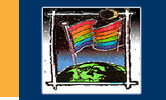Memoirs — Gens Hellquist
The Adventures of a Prairie Fag
Perceptions, The Gay & Lesbian Newsmagazine of the Prairies
Vol. 19, issue # 2, March 14, 2001.
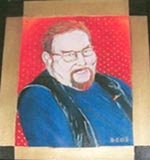 March
2001 marks the 30th anniversary of the beginning of efforts to build a gay and lesbian community in Saskatoon. While there were small groups
of gay men and other small groups of gay women going back at least to the 1920s, there were no organized initiatives to address the issues
that affected gay people until the first formal queer organization was begun in March 1971.
March
2001 marks the 30th anniversary of the beginning of efforts to build a gay and lesbian community in Saskatoon. While there were small groups
of gay men and other small groups of gay women going back at least to the 1920s, there were no organized initiatives to address the issues
that affected gay people until the first formal queer organization was begun in March 1971.
It's important for us to be aware of where we have come from and how we got to where we are today. The lessons of the past can help guide
our actions in the present and future. I have been part of the identified gay and lesbian community since I came out in 1965 at the tender
age of 19 and have been involved in establishing organizations and services in the queer community since I helped found the first queer group
in Saskatoon in 1971. This is also my 30th anniversary as a queer activist.
It has been a fascinating journey with times of sheer exhilaration and times of deep despair. I have had the honour and privilege to meet
and work with hundreds of wonderful men and women, gay and non-gay, who have toiled to build a place where all queer people are valued and
cherished.
This four-part series is a brief overview of my perceptions of Saskatoon's queer community. It is told through my eyes and others will have
somewhat different stories to tell; stories seen through their eyes. However one sees the events and issues, we all have shared in the passions
of carving out safe places for ourselves and our queer family.
Part 3
As the 1980's dawned dark clouds began to appear on the horizon. The 70s, a decade of sexual revolution and social change had wound down and
conservatism was on the rise across North America. Ronald Reagan was elected President in the United States and signalled a shift from the liberating
days of the past decade to the dark days of the 80s. In 1982 the NDP government in Saskatchewan lost to the Progressive Conservatives who ushered
in a decade of intolerance and corruption. By 1984 the conservative sweep was complete with Brian Mulroney's Tories sweeping to power in Ottawa.
Change was also occurring in Saskatoon's gay and lesbian community. The Gay/Lesbian Community Centre of Saskatoon (GLCCS) was running out of
steam with many gay men abandoning it to dance the night away at the new commercial gay club in town. Numbers was located on 2nd Avenue and 26th
Street. Gay & Lesbian Support Services (GLSS) continued to grow and was active with a phone line, community library, coming out and other
support groups. GLSS also started publishing a regular newsletter and in 1982 the first edition of their Gay Times appeared.
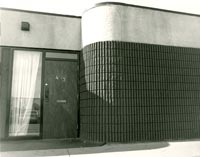
Both GLCCS and GLSS were struggling to publish their respective newsletters and the editor of the Centre's newsletter, Stuart Davidson, and
myself as editor of GLSS's newsletter decided there wasn't sufficient energy to publish two newsletter so we decided to join forces. A new name
was needed to distinguish the new joint effort and after tossing numerous names around Perceptions was chosen. The new publication would
provide "perceptions of life for gays and lesbians on the prairies". The first edition appeared in March of 1983.
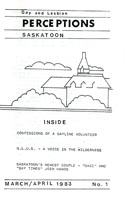
Over the decade Perceptions continued to grow. Initially it had a Saskatoon focus but soon grew to become a Saskatchewan focused publication.
By the time the decade ended it had grown from a eight page newsletter printed on 8 1/2" X 11" paper to the format used today. At the
time it was the only gay/lesbian publication on the prairies so it expanded it's coverage to include all three prairies provinces. It still maintains
the largest listing of queer organizations and businesses on the prairies. For many it remains an important link to the broader gay and lesbian
community.
By the end of 1983 the GLCCS had closed its doors. A series of disasters had drained the small volunteer work force struggling to keep the group
alive. A building caretaker had attempted to burn the centre down and a water pipe break had flooded the premises. They were the final straws
and with income no longer keeping up with expenses the decision was made to close its doors. Its assets were either sold or turned over to GLSS.
In 1982 the province took a turn towards the far right when the Progressive Conservative government of Grant Devine took office. They would
turn out to be no friends of the gay and lesbian community. They were a right-wing ideological group determined to remake the province with their
aggressive free-enterprise mentality. They would also turn out to be one of the most corrupt governments in the history of Canada with many of
them being charged with fraud and a few going to jail.
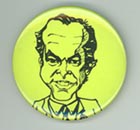
Cabinet Ministers regularly took potshots at any group they did not approve of and the gay and lesbian community was no exception. Provincial
Premier Grant Devine compared gays and lesbians to bankrobbers. In this climate many gays and lesbians in the province lowered their profile.
Many people, including myself, were blacklisted because they were seen as too left or too gay and not fitting with attitudes represented by the
Tories. Finding a job in the community sector, heavily dependent on government grants, proved difficult for me.
At least I had more attention to devote to work on Gaymates, a penpal-contact for gay men that I had started in the 1970s. Gaymates provided
a means for many gay men who lived in small centres or who didn't enjoy the commercial gay scene to connect with one another. While it never
proved to be the money maker I had hoped it did grow to include over 200 members from across Canada with a few in the United States and other
countries. Some of the men who met through Gaymates back in the 70s and 80s are still connected today.
Not everything disappeared in the 80s. Gays & Lesbians at the University of Saskatchewan (GLUS) had started on the university campus in
the late 70s as the Gay Academic Union and provided a support system for students and staff on campus. Along with other groups, they organized
and ran community dances out of the Ukrainian Hall on 20th Street and Avenue G. After Grant Devine's comparison of gays and lesbians to bank
robbers , GLUS organized a dance they named the Bankrobbers' Ball. The dance attracted a large crowd of male and female bankrobbers.
The fight for equality through changes in legislation also continued in the 1980s. A group of individuals in Saskatoon decided the community
needed a new organization to fight for equality and fight against the repressive attitudes of the provincial Tories. The Coalition for Human
Equality (CHE) was born and lobbying efforts were continued to bring about changes in human rights and other legislation that discriminated against
gays and lesbians. CHE also functioned as a counter balance to the homophobia of the Tories and frequently spoke out against the regressive attitudes
of the government. CHE lasted through the decade, with most of the energy eventually coming from Don McNamee who ended up devoting much of the
last years of his life to lobbying the provincial government for equality.
As the decade began rumours of a strange disease appearing in the United States and in some large Canadian cities appeared. The mysterious disease
killing gay men was initially labelled the "gay plague" and as more was understood about the disease it was renamed Gay Related Immune
Deficiency or GRID. Medical science was initially baffled by the disease that appeared to only strike gay men.
Religious and political conservatives were quick to declare that this new "gay plague" was God's retribution for gay men's sinful
lifestyle. Some called for all gay men to be rounded up and quarantined on some island in the middle of nowhere. Governments took little notice
of the mounting epidemic as it appeared to only affect gay men. Their narrow worldview blinded them to the epidemic that was growing in Africa
and killing tens of thousands of heterosexual people.
As medical science learned more about this new illness the virus that caused it, the Human Immunodeficiency Virus or HIV, was discovered and
the related diseases caused by the virus were called Acquired Immune Deficiency Syndrome (AIDS). The discovery that the virus could be transmitted
through sexual activity brought safer sex campaigns into the gay community. Suddenly the sexual liberation of the 70's seemed like a hollow victory
as sex could now kill. The days of free love were over and gay men drastically changed their sexual habits, mostly out of fear. Abstinence and
monogamy were now part of many gay men's lives.
In Saskatoon the community quickly recognized the peril posed by this new threat and GLSS put together a committee to look at a local response
to the epidemic. The Red Cross approached members of the community to ask gay men to refrain from giving blood. Hemophiliacs were also contracting
AIDS and gay men were frequently vilified as being responsible for spreading the epidemic and killing "innocent people".
The GLSS committee had heated discussions on how to address the growing peril in our community. Some thought the issues should be addressed
in the context of the many other problems that caused the death of gay men and lesbians such as suicide, substance abuse and mental illness.
Others felt a new organization dedicated to this new disease was more appropriate as they felt that governments would not provide funding to
gay organizations. The process of "degaying" the epidemic had begun.
The gay community was under attack over AIDS and many leaders blamed gay men for the deaths of non-gays resulting from the epidemic. Those in
the gay community organizing to deal with the epidemic rightly claimed that AIDS wasn't a gay disease with the result that resources often went
to fighting the epidemic in segments of the population that weren't at as high a risk as gay men.
The first visible signs of the epidemic occurred when gay men, who had come out into Saskatoon's gay community in the 70s and moved on to larger
centres, started to return to be around family when they died. The deaths started to mount and people started to get infected locally.
The energy that went into address HIV/AIDS had an effect on other groups like GLSS who went into a decline. By the mid 80's AIDS
Saskatoon had come into existence and energy was transferred from other issues to AIDS. A small group of volunteers attempted to keep GLSS
alive but eventually it declined to just a phone line answered a couple nights a week and eventually it became merely a phone answering machine
that dispensed information on the few activities and organizations in Saskatoon's queer community. Eventually GLSS folded and its few remaining
assets were transferred to Perceptions who held on to the community library in the hopes that a new group would soon come into existence
to address the other issues that impacted on gay men and lesbians.
The conservative pall of the times also caused gay men and lesbians to be fearful of being too visible. It was safer to retreat until the political
climate changed. CHE continued to struggle with a few people lobbying the government for human rights protection but nothing was likely to change
as long as the Conservatives remained in power in Saskatchewan.
As the 1980s came to a close AIDS was still killing gay men in the community although nationally the government had finally developed programs,
with funding, to address the epidemic in Canada. In Saskatchewan the Conservative government chose to do nothing while gay men died. HIV/AIDS
remained the central focus of the community through the last years of the decade.
Some of us were bidding our time waiting for an end to the Conservatism that had swept the continent as well as the world. Greed was in and
compassion and tolerance were out. The 1980s in many ways were the antithesis of the 1970s. The 70s had brought liberation, expansion and freedom.
The 80s had brought death and retraction as the community tried to weather the siege of conservatism and AIDS.
Part 1 | Part 2 |
Part 3 | Part 4

